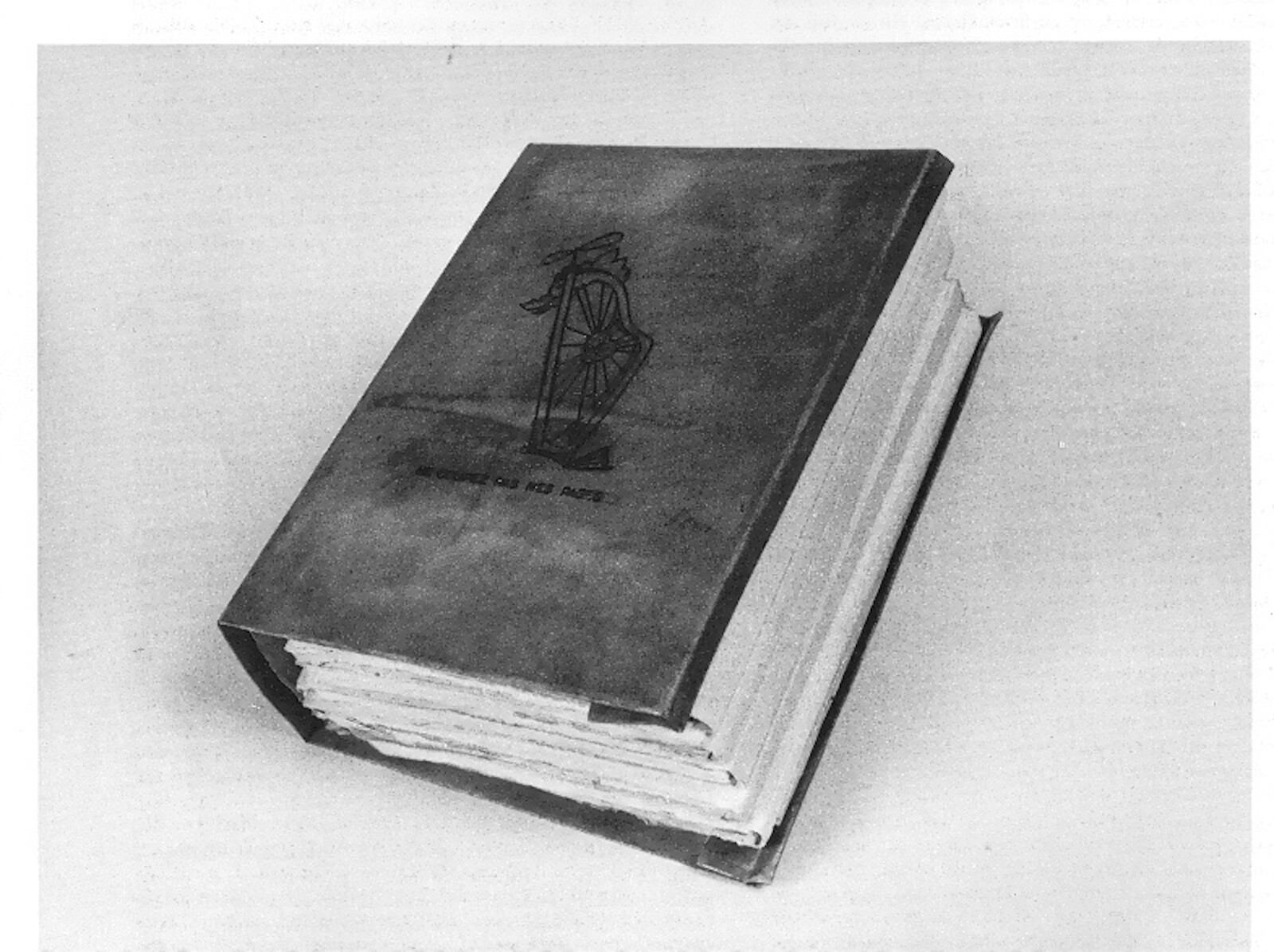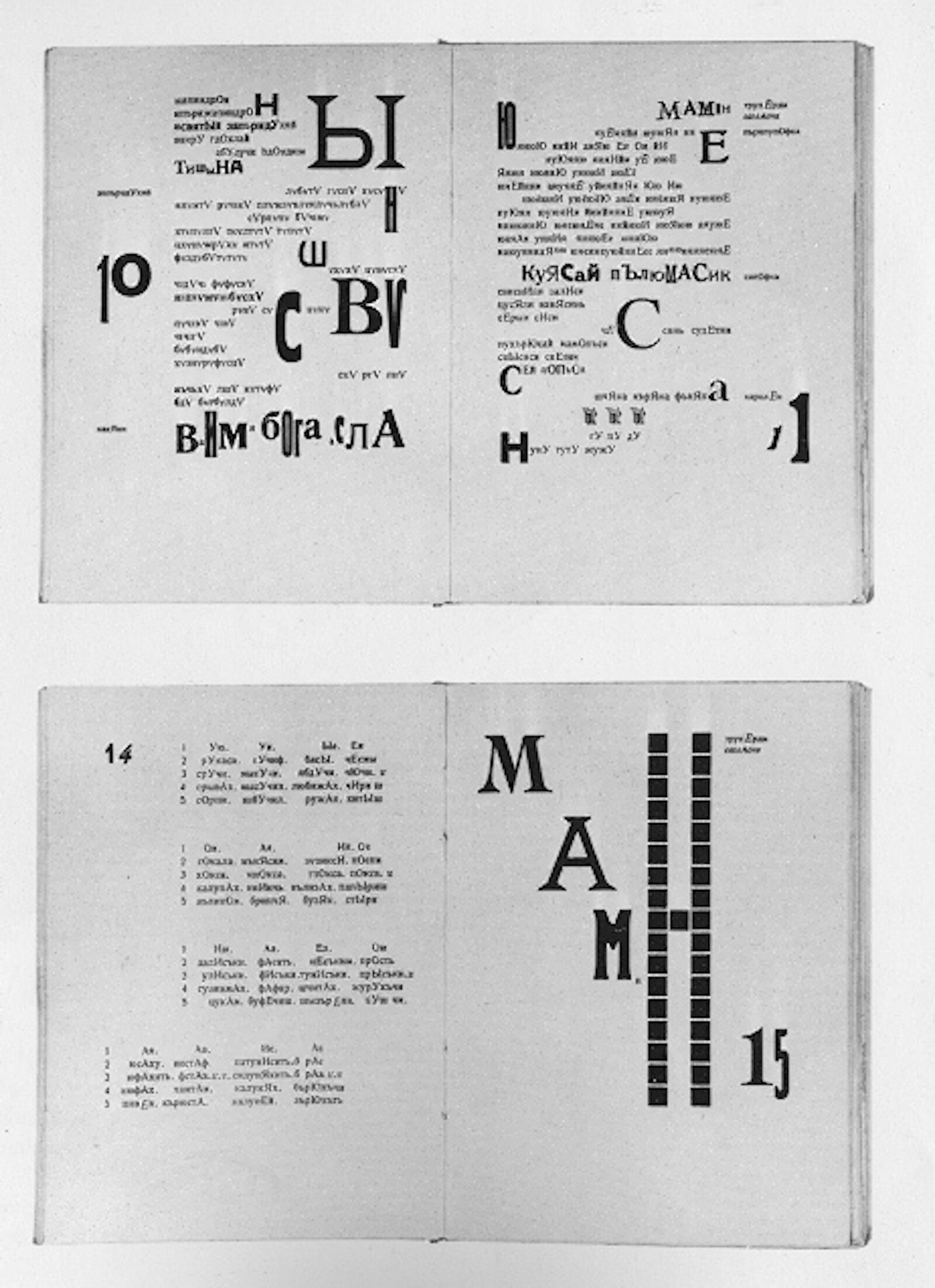In 1985, the book artist and future scholar of print and digital aesthetics Johanna Drucker was working on a chapter of her dissertation on Futurist and Dadaist typography in the Bibilothèque Jacques Doucet in Paris. Sitting across from her was a fellow American researcher, flipping through a “marvelous” deluxe edition of a livre d’artiste by someone who clearly belonged to one of these movements, but whose work Drucker did not recognize. The researcher explained that the work was by Ilia Zdanevich, better known by his alias Iliazd: a book artist, poet, playwright, novelist, and publisher who had left his native Georgia for Paris in the 1920s. If she was interested, Zdanevich’s widow Hélène lived nearby, and was always glad to speak to scholars about his work. Drucker was intrigued enough to pay a call on “Madame,” but could not have known that soon she would find herself visiting her daily, working with her on Iliazd’s biography, and becoming her confidante. Nor could Drucker have known that the project would only come to fruition thirty-five years later, with the publication of Iliazd: A Meta-Biography of a Modernist, or that it would look so different from what Hélène had in mind when she commissioned Drucker to write it.
Born in Tbilisi in 1894, Iliazd is a marginal but nevertheless significant figure in the history of modernist art: an active participant in at least four of its pivotal episodes. He introduced the theories of Filippo Tommaso Marinetti into Russia, coalescing the various strands of the pre-revolutionary avant-garde around the name Futurism in 1912. As the founder of 41 Degrees, the Georgian branch of that movement, he coined new terminology such as sdvig (shift) and faktura (texture) in order to capture, respectively, the “poetic deformation[s]” of the “orchestral scoring” and the “made-ness” of the “material format” characteristic of Russian Futurist typography and collage. He designed the poster for the infamous 1923 Soirée du Coeur à Barbe in Paris, and was on stage when a brawl broke out in the audience, marking the eclipse of Dadaism by what would become known as Surrealism. In 1947, his own public polemic with Isidore Isou over the history of Futurism would have a profound impact on the Lettrist movement, and subsequently Situationism.
More than this, however, Drucker argues that Iliazd merits our continued attention thanks to his innovations as a book artist. First, in the letterpress “performances” of his early cycle of otherwise unperformable plays, culminating in his masterpiece Ledentu Faram (1923), and then, beginning with The Letter (1948), in the series of deluxe edition livres d’artistes he published in collaboration with artists such as Pablo Picasso, Raoul Hausmann, Paul Éluard, and Max Ernst before his death in 1975. “Iliazd is a modern artist of the book,” Drucker writes. “No other early-to-mid-twentieth-century figure I had encountered […] had taken the book—its format, possibilities of drama, formal and conceptual dimensions—and worked with it as their primary form in quite the same way as Iliazd.” Whereas before, the relationship between image and text was traditionally illustrative, and the relationship between both of these and the typography, layout, and book design an afterthought, Iliazd treated the book not as a “vehicle for content,” but as an aesthetic medium in its own right. “For [him] the book was a form through which to think. It was a fully expressive object […] The editions he made did not—could not—exist in any other format.”
In emphasizing this particular aspect of Iliazd’s career, Drucker is, of course, claiming him as a precursor of her own. This, in part, explains why in Iliazd she détourns the conventions of traditional biography, enacting a critique of the epistemic and ethical limitations of the genre. In part, however, she is making a virtue out of necessity: she does not speak Russian or Georgian, never leaves Paris to visit the other cities where Iliazd lived, and her access to information comes almost exclusively through Hélène, the book’s most vivid character. Drucker reveals information as and how she receives it, forcing the reader to piece together a composite image of the biography’s subject along with the biographer. Where there are gaps in the documentary or testimony record—during the year Iliazd spent in poverty in Istanbul, say, or how Iliazd survived in occupied Paris during World War II—she refuses to fill them in with speculation. Out of respect for Hélène, she does not press her on potentially sensitive topics, but when she suspects Hélène’s recounting of an event is colored by her position as Iliazd’s widow, she says so—and then investigates her own motives for seeing the matter at hand in a different light. In exchange for objectivity, Drucker relinquishes completeness and certainty, but incompleteness and uncertainty, she suggests, are simply the price to pay for knowing anything at all.
In the end, Iliazd is Drucker’s artist’s statement, not Iliazd’s biography. It is a memoir of one artist looking for another artist in the traces of an archive, and finding instead all the contingencies—of time, personality, class, language, and culture—that mediate our understanding what of they mean. Hélène is unsurprisingly disappointed by the draft Drucker shows her: she had envisioned a narrative that would rescue her late husband from unjustified obscurity. But in one respect at least Drucker’s “meta-biography” is more faithful to Iliazd than the conventional biography Hélène had hoped for: it is a hybrid text that foregrounds the material conditions of narration in a manner analogous to the way Iliazd foregrounded the material conditions of production in his hybrid book art. In doing so, Drucker conveys to the reader not the complete image of Iliazd, but—to borrow his own term—his essential faktura.
Iliazd: A Meta-Biography of a Modernist by Johanna Drucker was published by Johns Hopkins University Press on December 15, 2020





